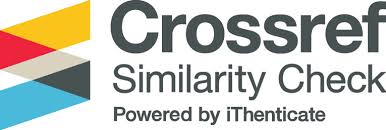Analysis Of Medicine Management Process With Lean Hospital Approach At RSUD X Jombang District
Abstract
The lean approach can make hospitals become more organized so they can improve the quality of services to patients by reducing waste, including the occurrence of errors, movements, transportation and poor service flow that leads to long service waits which certainly is not expected by patient. The purpose of this study was to identify the waste and the root causes of waste that occurred in the Pharmacy Installation at RSUD X Jombang.
This research method is a qualitative descriptive study. The stages of the research are the observation of the drug management process flow which is made in the form of value stream mapping, focus group dicussion, and fishbone diagrams to determine the root cause of the problem.
The results showed that the waste in the procurement process of 96.07% included in the category of necessary but non-value added, the acceptance process amounted to 62,59% of activities included in the category of necessary but non-value added, in the storage process there was a waste of 53, 39% included in the category of non value added, and in the process of using waste by 36.22% included in the category of non value added. The root cause of the problem of procurement is the length of time it takes to request the approval of PPK and PPTK, at the reception there is no specific place for receipt of goods, in storing all records and reporting is still manual and in use there is only one prescription receipt and delivery of drugs. In the future state mapping it is known to save time by 45.60% on procurement, 58% on revenue, 53.39% on storage, and 69% on usage.
References
[2] Swartz, J., Davis, D., D., Graban, M. (2015). Lean Hospital(ist)s. HospMed Clin,4, 581- 593.http://dx.doi.org/10.1016/j.ehmc.2015.06.008.
[3] Lawal, et al. (2014). Lean management in health care: definition concepts,methodology and effects reprotedn(systemic review protocol). Systemicreviews,3,103.http://www.systematicreviewcjournal.com/content/3/1/103.
[4] Toussaint, J.S., Berry, L.L, (2013) The Promise of Lean in Health Care. Mayo Clinic Proceedings. Volume 88, Issue 1, Pages 74–82
[5] Graban, M. (2012). Lean Hospitals: Improving Quality, Patient Safety, and Employee Engagement, 2nded. New York: CRP Press Taylor & Francis Group.
[6] Anggraini W., Putri A.N.I., (2020). Perbaikan Efisiensi Jalur Layanan Pasien Rumah Sakit dengan Menggunakan Pendekatan Lean Healthcare. Jurnal Inovasi Bisnis dan Manajemen Indonesia. UIN Sultan Syarif Kasim Riau.
[7] Jackson, T.L., (2012). Standard Work for Lean Healthcare. CRC Press, New York.
[8] Dart RC. Can lean thinking transform American health care? Ann Emerg Med. (2011);57(3):279-281.
[9] Gaspersz, Vincent, (2007). Lean Six Sigma for Manufacturing and Service Industries, Jakarta: PT. Gramedia Pustaka Utama.
[10] Wijayanti, T. R. I., Danu, S. S., & Inayati. (2011). Analisis Sistem Distribusi Obat di Instalasi Farmasi Rawat Inap Jogja International Hospital. Jurnal Farmasi Indonesia, 8(1), 20–27.
[11] Anggraeni, R., & Gultom, R. P. J. (2021). Evaluasi Mutu Pengelolaan Obat di Instalasi Farmasi Rumah Sakit Umum Imelda Pekerja Indonesia Medan. Jurnal Pharmascience, 8(1), 125. https://doi.org/10.20527/jps.v8i1.9608
[12] Prasetya, T.L., Kristin, E., dan Lestari, T., (2015). Waste In Drug Procurement Process In Pharmacy Department Santa Maria Hospital Pemalang, Indonesia. Interntional Journal of Pharmaceutical Sciences Review and Research, 31: 174-178.
[13] Daniyati, P.R., (2019). Analisis Proses Pengelolaan Obat di RSKB An Nur dengan Pendekatan Lean Hospital. Fakultas Farmasi. Universitas Gadjah Mada. Yogyakarta.
[14] Septarianil., Akabar, D.O., Satrio, W.R., (2017). Evaluasi Manajemen Penyimpanan Obat Di Gudang Farmasi Rumah Sakit Daerah Umum Idaman Banjarbaru. Jurnal Sekolah Tinggi Ilmu Kesehatan Borneo Lestari Banjarbaru.
[15] Ade, A. et al. (2012) ‘Implementasi Cara Distribusi Obat Yang Baik Pada Pedagang Besar Farmasi Di Yogyakarta’, Jurnal Farmasi Indonesia, 6(1), pp. 48–54.
[16] Quick JD, Hume ML. Ranking JR. O’Connor RW. (1997). Managing Drug Supply Second edition, revised and expanded. West Harford: Kumarian Press.
[17] Purwidyaningrum, I. ka (2011) ‘Analisis Distribusi Obat Rawat Inap di Instalasi Farmasi RSUD Tarakan Jakarta Pusat’, Jurnal Farmasi Indonesia, 8(1), pp. 12–19.
[18] Bahadori, M., Ghavidel, F., Mohammadzadeh, S., Ravangard, R (2014). The effects of an interventional program based on self-care model on healthrelated quality of life outcomes in hemodialysis paients. Journal of education and helath promotion. Vol 5.
[19] Purwanto, et al. (2015). Faktor Penyebab Waktu Tunggu Lama di Pelayanan Instalasi Farmasi Rawat Jalan RSUD Blambangan. Jurnal Kedokteran Brawijaya 28(2): 159-163.
[20] Wijaya, Hendi. 2012, Analisis Pelaksanaan Standar Pelayanan Minimal (Spm) Rumah Sakit Bidang Farmasi Di Instalasi Farmasi Rumah Sakit Tugu Ibu Tahun 2012, Tesis, Fakultas Kesehatan Masyarakat,Universitas Indonesia, Depok.
[21] Slowiak, J.M., Huitema, B.E. & Dickinson, A.M., 2008. Reducing Wait Time in a Hospital Pharmacy to Promote Customer Service. Q Manage Health Care, 17(2), pp.112–127.













